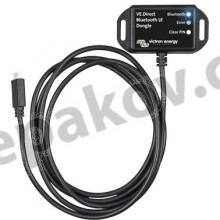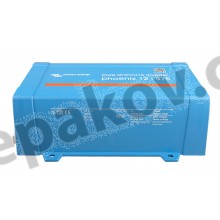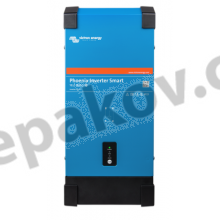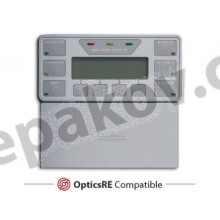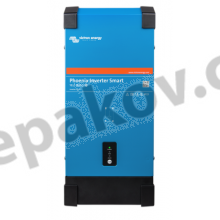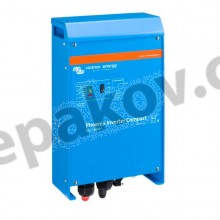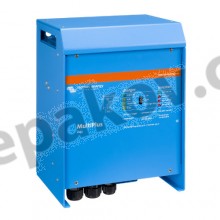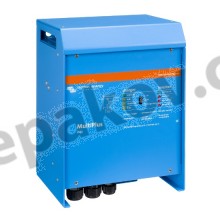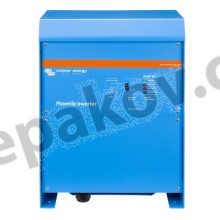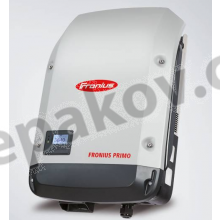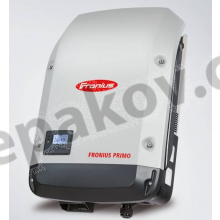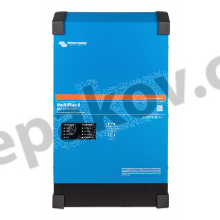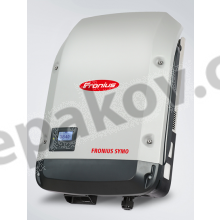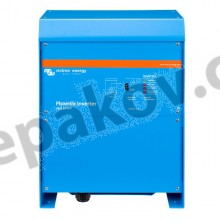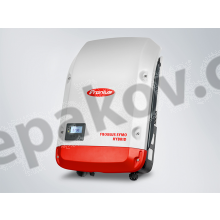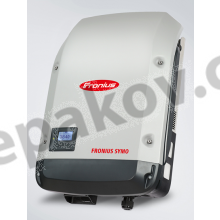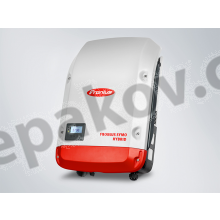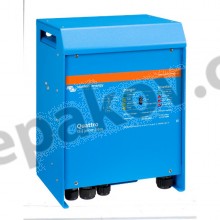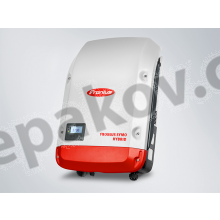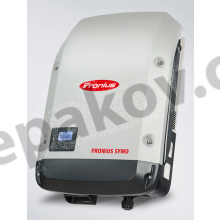- Category
- Price
-
- IP level
- Producer's warranty
- AC input
- Charging current
- Standard AGM
- DC-DC
Inverter
Types of inverters for homes:
In general, an inverter is a device that transforms DC power from batteries or renewable sources into AC power. But many different devices are sold under the name “ inverter “ and they actually have different applications. Experience shows that this list expands each year.
So how do you chose which one is the most appropriate for your home? Well, in our view, it depends on your intended application and your personal preferences. As a first step, our suggestion is to spend 5 min. and read the information below.
Grid-tie (also called “on-grid”) inverters for home:
These are one of the most popular devices ( sometimes called on-grid inverters). They convert power from solar panels into AC power and in the same time – they synchronize their output signal with the grid. These systems can be used in homes in order to sale energy to the grid or for your own consumption. The systems do not need batteries.
sometimes called on-grid inverters). They convert power from solar panels into AC power and in the same time – they synchronize their output signal with the grid. These systems can be used in homes in order to sale energy to the grid or for your own consumption. The systems do not need batteries.
If the grid fails, the grid-tie inverters immediately stops and prevents any feeding of energy either to the house , or to the grid. Thus, these systems are not recommended when the customer wants to have UPS functionality in his home. Also, only by themselves, these systems cannot be used in remote areas that do not have AC grid present.
Some of the inverters can be combined with smart meters that limit (some to 0) the feed-back of electricity to the grid. Thus, now it is possible to install grid-tie system in your home and not to feed any energy to the grid. The grid-tie inverters are further divided into “micro inverters” (inverters usually with power rating 250-400W), “string inverters” (inverters usually with power rating of 1-25kWp) and “central inverters” (used primary in industrial applications).
How we pick-up brands to work-with:
A system with grid-tie inverter is expected to work 10-25 years at least. Thus, we only choose high-quality on-grid inverters. Also, as experience shows, financial stability of the company is important – if your producer goes bankrupt , it is a bit doubtful whether or not your warranty claim will be covered.
Off-grid inverter
They are used mostly in remote homes, yachts, cars, simple solar systems.
The function of this device is to transform the DC power from batteries into AC power. For example, with such an inverter, one can build a remote solar/wind system (consisting of PV modules, batteries, solar charger and inverter) that can power-up devices like laptop, TV lights, refrigerator, etc, or one can use the devices in his yacht in order to have AC power on it; or one can use it to power appliances on a yacht / boat.

The inverters with full sine wave are capable of powering all types of devices that have lower power rating than the nominal power rating of the inverter.
The inverters with modified sine wave are far cheaper than those with full sine wave. Modified sine wave inverters have their limitations and do not work will appliances.
Also, extremely cheap inverters that are sold in the EU market do not always comply with the EU's safety regulations and pose risks to their users as it can be seen from this link:
In the search criteria simply choose Years = 2018, 2017, 2016 or the time period that you want and in the “free text” type “inverter” and then click on “Search”. The inverters on the market that have be found not to comply with the standards will be listed as the image below. Still, just by looking at the products one can find many similar (to the ones that are banned) products on the market currently , that are sold under different brands.
Hybrid inverters ( Inverters with AC chargers )
Another type of devices sold under the name “inverter” are the inverters with AC chargers. The idea is that the AC grid (or sometimes a genset) can be used to power the appliances or to charge the batteries in some cases.
Typically , all inverters with AC chargers can be used as UPS ( uninterrupted power supply ) in combination with batteries. For example, if you want to have reserve power of 1kW in your home for , say, 30min , then you can do that relatively cheaply with one inverter with AC charger (of , say, 1.2 kW ) and one deep cycle battery (of about 100Ah). In this situation the AC grid is always accepted by the inverter. It gets a bit more complicated when you can program the inverter when to accept the AC power.
Some inverters with AC chargers can be programmed to work in ESS ( Energy Storage system) setting ; some can't do that.
Some inverters with AC chargers can accept a generator input ; some can't.
Some inverters with AC chargers can be overloaded (in case AC power is available) , some can't.
Some inverters with AC chargers are equipped with solar MPPT chargers, some are with PWM chargers (usually a bad choice), some do not have any solar chargers.
The most popular system for homes , currently, are the ESS settings. Use ESS in a self-consumption system, a backup system with solar or a mixture of both: for example using the top 20% of the battery capacity for self-consumption, while keeping the other 80% available as a backup during a utility grid failure.
Optimizing self-consumption:
at times when there is excess PV power, the PV energy is stored in the battery. That stored energy is then used to power the loads at times when there is a shortage of PV power.
The percentage of battery capacity used for optimizing self-consumption is configurable: set it to 100% for (Western Europe / Germany). Or for locations with frequent, or even daily, grid failures, set the threshold to 80%. Only the top 20% will be used to optimize self-consumption, the rest of the capacity is reserved for grid failures. African countries for example.
How to choose an off-grid inverter:
The inverter will be the main power supplier to your consumers, so it has to be able to handle your full load. For small systems, it is good to select the inverter's power rating to be slightly higher than the total installed power
Example: if you have the following consumers:
Coffee Maker 1000W
LED - lamps 3 pieces of 10W each - total 30W
LED TV - 35W
Computer- 300W
Total installed power 1365W
You have two options for selecting the inverter power:
Option 1: An inverter with a higher power than the total installed power. This ensures that even if you turn on all the consumers, the inverter will operate without interruption .
Option 2: inverter with less than total power, but with higher power than the most powerful appliance (in this case the coffee maker). In this case, care must be taken not to exceed the maximum power of the inverter. Otherwise, it will shut down and you will have an electrical interruption.
Power information for each appliance can be obtained from its data plate. Most electrical appliances have a label on the back of which the power and other technical data are written. For some refrigerators - the plate is inside and the door needs to be opened. Data on the power of electrical appliances can be found on the Internet as well as in stores for such equipment.
Starting current
If you have consumers with electric motors or with capacitors, you should also take into account their starting current. In this case, the maximum peak current of the inverter must be higher than the starting current of the consumers.
Options in higher-quality inverters:
Transfer switch - what does it represent and how it works?
It is a device that is used in inverters with AC chargers that are connected to an external power source (public grid, electric generator). You can use the transfer switch to directly and automatically power your consumers from the external power source.
Some inverter manufacturers install a transfer switch with much larger power rating than the inverter. Thus, in the presence of an external power source, it is possible to power-up the consumers exceeding the power of the inverter. However, if the external AS source fails, the total power of the consumers must be immediately reduced below that of the inverter; otherwise the inverter will shut down.
Two outputs of the inverter
There are inverters with two outputs, where second operates only when an external power supply is present. Usually, only power consumers are connected to this output, and when the external source is turned off, they are turned off. This is useful for example in yachts , where so important appliances (like navigation) should always operate without disruption. Loads that should not discharge the battery, like a water heater for example can be connected to this output (second output available on models rated at 3 kVA and more).
Two inputs for external source
Some high-quality inverters have two independent inputs for an external source, such as a public grid and a generator. The inverter finds which source is active and is connected to it. When both sources are active, the inverter selects the source with priority.
Synchronize the output signal with the external source
Some manufacturers of quality inverters synchronize the output signal of the inverter to the external source. Thus, if the inverter is used in a solar or wind system, it uses the energy from the renewable source and, if necessary, can add energy from the AC grid when needed. This is an intelligent solution that eliminates the problem of volatile peaks in consumption.
Power Assist - how it works?
It allows the the inverters to supplement the capacity of the alternative source. Where peak power is so often required only for a limited period, the inverters will make sure that insufficient shore or generator power is immediately compensated for by power from the battery. When the load reduces, the spare power is used to recharge the battery.
It is often used in yachts, campers.
Work in parallel
Quality inverters can work in parallel and thus - multiply output power.
Typically, one inverter is the main (lead). This way an existing and operating system can be expanded to a larger one.
Three-phase operation
Good inverters can work in one-phase system and in a three-phase system. Typically, these are three identical inverters (one at each phase) connected to a small matching device that converts the phases to 120º relative to each other. More than one inverter can be mounted in parallel on the individual phases and a high power type system can be obtained.
Input current limitation
Some inverters can be set to limit the input current from the external source. This is especially useful for inverters in yachts and caravans . Limitation is also necessary when an inverter is connected to a small generator and the generator is in danger of being overloaded by the consumers.
Example: An inverter is mounted on a yacht and at a given port the maximum current that is allowed to draw is 10A.
UPS functionality
Most inverters with built-in chargers can also be used for uninterruptible power supply. When an external network is present, the inverter charges the batteries and remains in standby mode. When the external power supply stops, the inverter starts to operate and supplies the consumers.
Solar inverters
Some inverter manufacturers also add a solar charger controller. There are inverters with an additional built-in AC - switchboard with fuses. In this way, the inverter turns into a multifunctional energy system consisting of a powerful sine wave inverter and a sophisticated battery charger, a high speed AC switch and AC distribution in a lightweight and compact enclosure. There are numerous options here - there are inverters with MPPT chargers and full sine wave with/without transfer switch; with/without power assist, with / without ESS, etc.
-
The VE.Direct to USB interface connects products with a VE.Direct connection to devices with a USB port, for example a computer. With this cable it is also possible to connect more than two VE.Direct products to a single CCGX.
€34.17 As low as: €32.80Availability: In stock
-
A a wireless battery voltage and temperature sensor for Victron MPPT Solar Chargers.
€45.90Availability: Backorder
-
Using the VE.Direct to Bluetooth Smart dongle you can display your BMV or MPPT information on iOS and Android devices, using the VictronConnect app. View information wirelessly such as battery status and solar panel power, plus other useful data..€53.55
Availability: Backorder
-
Full sinewave. Protection from overloading, low/high voltage of the batteries, high temperature, short circuit of the output, 5 years warranty. High Peak Power: 24V 250VA
€82.11Availability: Backorder
-
Output Signal: Full sinewave Nominal Power: 250VA / 175W Peak Power: 400W Producer Warranty: 5 years Input Voltage: 48Vdc €92.31Availability: Backorder
-
Full sinewave. Protection from overloading, low/high voltage of the batteries, high temperature, short circuit of the output, 5 years warranty. High Peak Power: 12V 250VA
€116.28 As low as: €107.22Availability: Backorder
-
Output Signal: Full Sinewave Nominal Power: 375VA / 300W Peak Power: 700W Producer Warranty: 5 years Input Voltage: 48Vdc €119.85Availability: Backorder
-
Output signal: Full sinewave Nominal Power: 375VA / 300W Peak Power: 700W Producer Warranty: 5 years Input Voltage: 24Vdc €150.45 As low as: €134.64Availability: Backorder
-
Output signal:
Full sinewave
Nominal Power:
375VA / 300W
Peak Power:
700W
Producer Warranty:
5 years
Input Voltage:
12Vdc
€150.45 As low as: €134.64Availability: Backorder
-
Output Signal: Full sinewave Nominal Power: 500VA / 400W Peak Power: 900W Producer warranty: 5 years Input Voltage: 48Vdc €150.45Availability: Backorder
-
The Digital Multi Control panel (DMC) is a remote panel designed to work with all Multis /Quattro’s and Multi/Quattro systems. This includes stand alone, parallel and 2-3 phase configurations. Both VE.Bus and non VE.Bus systems are supported.€159.12 As low as: €152.76
Availability: Backorder
-
Output Signal: Full sinewave Nominal Power: 500VA / 400W Peak Power: 900W Producer Warranty: 5 years Input Voltage: 12Vdc €188.19Availability: Backorder
-
Output Signal: Full sinewave Nominal Power: 500VA / 400W Peak Power: 900W Producer Warranty: 5 years Input Voltage: 24Vdc €192.78Availability: Backorder
-
Output Full sine wave Nominal power at 250C 800VA / 7000W Peak power at 250C 1600W Warranty of the producer 5 years Battery voltage 24Vdc €306.51 As low as: €305.02Availability: Backorder
-
Output Full sine wave Nominal power at 250C 800VA / 7000W Peak power at 250C 1600W Warranty of the producer 5 years Battery voltage 48Vdc €306.51Availability: Backorder
-
Output Full sine wave Nominal power at 250C 800VA / 7000W Peak power at 250C 1600W Warranty of the producer 5 years Battery voltage 12Vdc €306.51 As low as: €305.02Availability: Backorder
-
The Fronius Meter is a bidirectional meter which optimises self-consumption and records the household‘s load curve.€331.50
Availability: Backorder
-
Output Full sine wave Nominal power at 250C 1200VA / 1000W Peak power at 250C 2400W Warranty of the producer 5 years Battery voltage 48Vdc €364.14Availability: Backorder
-
- Full sine wave
- 1000VA / 1000W
- 12V nominal voltage
- MPPT charger for up to 500Wp PV power
- АС charger 20А
- LCD display
€381.99 As low as: €366.71Availability: In stock
-
Output signal: Full sinewave Nominal Power: 500VA / 430W Peak Power: 900W Charging current of the battery: 20А Transfer Key: 16А @ 230Vac Producer Warranty: 5 years Input Voltage: 48Vdc €389.13Availability: Backorder
-
Output Full sine wave Nominal power at 250C 1200VA / 1000W Peak power at 250C 2400W Warranty of the producer 5 years Battery voltage 12Vdc €404.94Availability: Backorder
-
Output Full sine wave Nominal power at 250C 1200VA / 1000W Peak power at 250C 2400W Warranty of the producer 5 years Battery voltage 24Vdc €404.94Availability: Backorder
-
- Full sine wave;
- 3000VA / 2400W;
- 24V nominal voltage;
- Supply load from Grid or PV
- MPPT charger for up to 1000Wp PV power;
- Output source priority: Solar first; Utility first; Solar→Battery→Utility
- АС charger 25А;
- LCD display.
€422.79 As low as: €405.88Availability: In stock
-
Output signal: Full sinewave Nominal Power: 500VA / 430W Peak Power: 900W Charging current of the batteries 20А Transfer Key: 16А @ 230Vac Producer Warranty: 5 years Input Voltage: 24Vdc €450.84Availability: Backorder
-
Output Signal: Full sinewave Nominal Power: 500VA / 430W Peak Power: 900W Charging current of the batteries: 20А Transfer Key: 16А @ 230Vac Producer Wattanty: 5 years Input Voltage: 12Vdc €450.84Availability: Backorder
-
The Fronius Datamanager is the communications centre for Fronius inverters for a variety of applications. Whenever it is connected to the internet via a LAN or WLAN, the Fronius Datamanager sends the PV system values directly to the Fronius Solar.web online portal. This provides you with an overview of how the system is operating at all times.
€485.52Availability: Backorder
-
Output Full sine wave Nominal power at 250C 1600VA / 1300W Peak power at 250C 3000W Warranty of the producer 5 years Battery voltage 24Vdc €506.43Availability: Backorder
-
Output Full sine wave Nominal power at 250C 1600VA / 1300W Peak power at 250C 3000W Warranty of the producer 5 years Battery voltage 12Vdc €506.43Availability: Backorder
-
Output signal:
Full sinewave
Nominal Power:
1200VA / 1000W
Peak Power:
2400W
Producer Warranty:
5 years
Input Voltage:
12Vdc
€527.85Availability: Backorder
-
MATE3 System Display and Controller for Outback inverters USA€561.00
Availability: Backorder
-
Output Full sine wave Nominal power at 250C 1600VA / 1300W Peak power at 250C 3000W Warranty of the producer 5 years Battery voltage 48Vdc €579.36Availability: Backorder
-
- nominal power: 800VA / 700W @25C
- nominal voltage: 12V
- AC charger : 35A
- Transfer switch: 16A
€601.80Availability: Backorder
-
Output signal:
Full sinewave
Nominal Power:
1200VA / 1000W
Peak Power:
2400W
Producer Warranty:
5 years
Input Voltage:
24Vdc
€607.41Availability: Backorder
-
Output Full sine wave Nominal power at 250C 1600VA / 1300W Peak power at 250C 3000W Warranty of the producer 5 years Battery voltage 12Vdc €743.07Availability: Backorder
-
Output Full sine wave Nominal power at 250C 1600VA / 1300W Peak power at 250C 3000W Warranty of the producer 5 years Battery voltage 24Vdc €743.07Availability: Backorder
-
Output Full sine wave Nominal power at 250C 2000VA / 1600W Peak power at 250C 4000W Warranty of the producer 5 years Battery voltage 24Vdc €778.26Availability: Backorder
-
Optimising self-consumption through the intelligent, continuously adjustable regulation of heat sources.€841.50
Availability: Backorder
-
- nominal power: 1200VA / 1000W @25C
- nominal voltage: 12V
- AC charger : 50A
- Transfer switch: 16A
€850.68Availability: Backorder
-
- nominal power: 1200VA / 1000W @25C
- nominal voltage: 24V
- AC charger : 25A
- Transfer switch: 16A
€850.68Availability: Backorder
-
Output Full sine wave Nominal power at 250C 2000VA / 1600W Peak power at 250C 3000W Warranty of the producer 5 years Battery voltage 12Vdc €864.45Availability: Backorder
-
- nominal power: 3000VA / 2400W @25C
- nominal voltage: 48V
- AC charger : 35A
- Transfer switch: 32A
€881.79Availability: Backorder
-
Output Full sine wave Nominal power at 250C 2000VA / 1600W Peak power at 250C 1300W Warranty of the producer 5 years Battery voltage 24Vdc €897.60Availability: Backorder
-
Output Full sine wave Nominal power at 250C 2000VA / 1600W Peak power at 250C 4000W Warranty of the producer 5 years Battery voltage 12Vdc €897.60Availability: Backorder
-
- nominal power: 800VA / 700W @25C
- nominal voltage: 24V
- AC charger : 16A
- Transfer switch: 16A
€930.75 As low as: €802.94Availability: Backorder
-
- Full sine wave;
- 5000VA / 5000W;
- 48V nominal voltage;
- Supply load from Grid or PV, even battery is not available;
- MPPT charger for up to 5000Wp PV power;
- АС charger 60А;
- LCD display.
€943.50 As low as: €875.89Availability: Backorder
-
- nominal power: 1600VA / 1300W @25C
- nominal voltage: 12V
- AC charger : 70A
- Transfer switch: 16A
€954.21Availability: Backorder
-
- nominal power: 1600VA / 1300W @25C
- nominal voltage: 24V
- AC charger : 25A
- Transfer switch: 16A
€954.21Availability: Backorder
-
- nominal power: 3000VA / 2400W @25C
- nominal voltage: 48V
- AC charger : 35A
- Transfer switch: 16A
€1,050.09Availability: Backorder
-
Output Full sine wave Nominal power at 250C 2000VA / 1600W Peak power at 250C 4000W Warranty of the producer 5 years Battery voltage 48Vdc €1,061.31 As low as: €903.31Availability: Backorder
-
- nominal power: 3000VA / 2400W @25C
- nominal voltage: 48V
- AC charger : 35A
- Transfer switch: 50A
€1,095.48Availability: Backorder
-
Output Full sine wave Nominal power at 250C 3000VA / 2400W Peak power at 250C 6000W Warranty of the producer 5 years Battery voltage 48Vdc €1,120.47Availability: Backorder
-
With 1500W output power and HF-transformer, Fronius Galvo is a single-phase inverter suitable for almost any type of solar panels. The high system voltage, wide input voltage range and MPP tracker ensure maximum flexibility in system design. The standard interface to the internet via WLAN or Ethernet and the ease of integration of third-party components make the Fronius Galvo one of the most communicative inverters on the market.
€1,133.73 As low as: €1,036.48Availability: Backorder
-
Output Full sine wave Nominal power at 250C 3000VA / 2400W Peak power at 250C 6000W Warranty of the producer 5 years Battery voltage 12Vdc €1,159.23Availability: Backorder
-
With 2000W output power and HF-transformer, Fronius Galvo is a single-phase inverter suitable for almost any type of solar panels. The high system voltage, wide input voltage range and MPP tracker ensure maximum flexibility in system design. The standard interface to the internet via WLAN or Ethernet and the ease of integration of third-party components make the Fronius Galvo one of the most communicative inverters on the market.
€1,160.76 As low as: €1,061.45Availability: Backorder
-
With power 2500W and HF-transformer, Fronius Galvo is a single-phase inverter. The high system voltage, wide input voltage range and MPP tracker ensure maximum flexibility in system design. The standard interface to the internet via WLAN or Ethernet and the ease of integration of third-party components make the Fronius Galvo one of the most communicative inverters on the market.
€1,186.77 As low as: €1,084.95Availability: Backorder
-
With power 3.0 kW, the transformerless Fronius Symo is a three-phase inverter. The high system voltage, wide input voltage range and a MPP tracker ensure maximum flexibility in system design.
€1,195.95 As low as: €1,123.63Availability: Backorder
-
With 3100W output power and HF-transformer, Fronius Galvo is a single-phase inverter suitable for almost any type of solar panels. The high system voltage, wide input voltage range and MPP tracker ensure maximum flexibility in system design. The standard interface to the internet via WLAN or Ethernet and the ease of integration of third-party components make the Fronius Galvo one of the most communicative inverters on the market.
€1,212.78 As low as: €1,108.94Availability: Backorder
-
With 3000W output power and HF-transformer, Fronius Galvo is a single-phase inverter suitable for almost any type of solar panels. The high system voltage, wide input voltage range and MPP tracker ensure maximum flexibility in system design. The standard interface to the internet via WLAN or Ethernet and the ease of integration of third-party components make the Fronius Galvo one of the most communicative inverters on the market.
€1,212.78 As low as: €1,108.94Availability: Backorder
-
This single-phase, transformerless device is the ideal inverter for private households. Its innovative SuperFlex Design provides maximum flexibility in system design, while the SnapINverter mounting system makes installation and maintenance easier than ever before. The communication package included as standard, with WLAN, energy management, several interfaces and much more besides, makes the Fronius Primo a communicative inverter for owner-occupiers.
€1,214.31 As low as: €1,148.60Availability: Backorder
-
This single-phase, transformerless device is the ideal inverter for private households. Its innovative SuperFlex Design provides maximum flexibility in system design, while the SnapINverter mounting system makes installation and maintenance easier than ever before. The communication package included as standard, with WLAN, energy management, several interfaces and much more besides, makes the Fronius Primo a communicative inverter for owner-occupiers.
€1,245.42 As low as: €1,097.68Availability: Backorder
-
- nominal power: 2000VA / 1600W @25C
- nominal voltage: 12V
- AC charger : 80A
- Transfer switch: 30A
€1,290.81Availability: Backorder
-
- nominal power: 2000VA / 1600W @25C
- nominal voltage: 24V
- AC charger : 50A
- Transfer switch: 30A
€1,290.81Availability: Backorder
-
This single-phase, transformerless device is the ideal inverter for private households. Its innovative SuperFlex Design provides maximum flexibility in system design, while the SnapINverter mounting system makes installation and maintenance easier than ever before. The communication package included as standard, with WLAN, energy management, several interfaces and much more besides, makes the Fronius Primo a communicative inverter for owner-occupiers.
€1,313.25 As low as: €1,157.41Availability: Backorder
-
With power 3.0 kW, the transformerless Fronius Symo is a three-phase inverter. The high system voltage, wide input voltage range and two MPP trackers ensure maximum flexibility in system design. The standard interface to the internet via WLAN or Ethernet and the ease of integration of third-party components make the Fronius Symo one of the most communicative inverters on the market.
€1,315.80 As low as: €1,225.96Availability: Backorder
-
This single-phase, transformerless device is the ideal inverter for private households. Its innovative SuperFlex Design provides maximum flexibility in system design, while the SnapINverter mounting system makes installation and maintenance easier than ever before. The communication package included as standard, with WLAN, energy management, several interfaces and much more besides, makes the Fronius Primo a communicative inverter for owner-occupiers.
€1,370.88 As low as: €1,208.82Availability: Backorder
-
- nominal power: 5000VA / 4000W @25C
- nominal voltage: 48V
- AC charger : 70A
- Transfer switch: 50A
€1,386.69Availability: Backorder
-
This single-phase, transformerless device is the ideal inverter for private households. Its innovative SuperFlex Design provides maximum flexibility in system design, while the SnapINverter mounting system makes installation and maintenance easier than ever before. The communication package included as standard, with WLAN, energy management, several interfaces and much more besides, makes the Fronius Primo a communicative inverter for owner-occupiers.
€1,450.95 As low as: €1,280.79Availability: Backorder
-
With power 3.7 kW, the transformerless Fronius Symo is a three-phase inverter. The high system voltage, wide input voltage range and a MPP tracker ensure maximum flexibility in system design.
€1,462.68 As low as: €1,115.80Availability: Backorder
-
This single-phase, transformerless device is the ideal inverter for private households. Its innovative SuperFlex Design provides maximum flexibility in system design, while the SnapINverter mounting system makes installation and maintenance easier than ever before. The communication package included as standard, with WLAN, energy management, several interfaces and much more besides, makes the Fronius Primo a communicative inverter for owner-occupiers.
€1,500.93 As low as: €1,304.78Availability: Backorder
-
- nominal power: 5000VA / 4000W @25C
- nominal voltage: 48V
- AC charger : 70A
- Transfer switch: 100A
€1,565.19Availability: Backorder
-
- nominal power: 3000VA / 2400W @25C
- nominal voltage: 12V
- AC charger : 120A
- Transfer switch: 16A
€1,595.79 As low as: €1,586.30Availability: Backorder
-
- nominal power: 3000VA / 2400W @25C
- nominal voltage: 24V
- AC charger : 70A
- Transfer switch: 16A
€1,595.79 As low as: €1,586.30Availability: Backorder
-
All-in-one solar power solution
The EasySolar combines a MPPT Solar Charge Controller, an inverter/charger and AC distribution in one enclosure. The product is easy to install, with a minimum of wiring.
€1,599.36 As low as: €1,504.54Availability: Backorder
-
All-in-one solar power solution
The EasySolar combines a 100/50 MPPT Solar Charge Controller, a MultiPlus Compact inverter/charger 24V/1600VA/40-16 and AC distribution in one enclosure. The product is easy to install, with a minimum of wiring.
€1,599.36 As low as: €1,505.52Availability: Backorder
-
With power 3.7 kW, the transformerless Fronius Symo is a three-phase inverter. The high system voltage, wide input voltage range and two MPP trackers ensure maximum flexibility in system design. The standard interface to the internet via WLAN or Ethernet and the ease of integration of third-party components make the Fronius Symo one of the most communicative inverters on the market.
€1,600.89 As low as: €1,339.06Availability: Backorder
-
With power 4,5 kW, the transformerless Fronius Symo is a three-phase inverter. The high system voltage, wide input voltage range and a MPP tracker ensure maximum flexibility in system design.
€1,605.48 As low as: €1,241.14Availability: Backorder
-
Output Full sine wave Nominal power at 250C 5000VA / 4000W Peak power at 250C 10000W Warranty of the producer 5 years Battery voltage 48Vdc €1,662.60Availability: Backorder
-
With power 4.5 kW, the transformerless Fronius Symo is a three-phase inverter. The high system voltage, wide input voltage range and two MPP trackers ensure maximum flexibility in system design. The standard interface to the internet via WLAN or Ethernet and the ease of integration of third-party components make the Fronius Symo one of the most communicative inverters on the market.
€1,681.47 As low as: €1,409.07Availability: Backorder
-
With power 5.0 kW, the transformerless Fronius Symo is a three-phase inverter. The high system voltage, wide input voltage range and two MPP trackers ensure maximum flexibility in system design. The standard interface to the internet via WLAN or Ethernet and the ease of integration of third-party components make the Fronius Symo one of the most communicative inverters on the market.
€1,706.46 As low as: €1,431.59Availability: Backorder
-
- nominal power: 3000VA / 2400W @25C
- nominal voltage: 24V
- AC charger : 70A
- Transfer switch: 50A
€1,721.76 As low as: €1,713.11Availability: Backorder
-
This single-phase, transformerless device is the ideal inverter for private households. Its innovative SuperFlex Design provides maximum flexibility in system design, while the SnapINverter mounting system makes installation and maintenance easier than ever before. The communication package included as standard, with WLAN, energy management, several interfaces and much more besides, makes the Fronius Primo a communicative inverter for owner-occupiers.
€1,731.45 As low as: €1,508.46Availability: Backorder
-
With power 6.0 kW, the transformerless Fronius Symo is a three-phase inverter. The high system voltage, wide input voltage range and two MPP trackers ensure maximum flexibility in system design. The standard interface to the internet via WLAN or Ethernet and the ease of integration of third-party components make the Fronius Symo one of the most communicative inverters on the market.
€1,739.61 As low as: €1,460.48Availability: Backorder
-
Output Full sine wave Nominal power at 250C 3000VA / 2400W Peak power at 250C 6000W Warranty of the producer 5 years Battery voltage 24Vdc €1,802.85 As low as: €1,348.36Availability: Backorder
-
- Full sine wave
- 2300VA
- 48V battery voltage
- АС charger 35А
- Outback - USA
- Operating temperature - from -40 to +60С
€1,887.00 As low as: €1,811.52Availability: Backorder
-
This single-phase, transformerless device is the ideal inverter for private households. Its innovative SuperFlex Design provides maximum flexibility in system design, while the SnapINverter mounting system makes installation and maintenance easier than ever before. The communication package included as standard, with WLAN, energy management, several interfaces and much more besides, makes the Fronius Primo a communicative inverter for owner-occupiers.
€1,981.86 As low as: €1,730.25Availability: Backorder
-
With power 3.0 kW, the three-phase inverter allows Surplus energy from a photovoltaic system to be temporarily stored in the Fronius Solar Battery. The builtin Multi Flow Technology enables the energy flows to be intelligently managed.
€2,053.77Availability: Backorder
-
With power 10.0 kW, the transformerless Fronius Symo is a three-phase inverter. The high system voltage, wide input voltage range and two MPP trackers ensure maximum flexibility in system design. The standard interface to the internet via WLAN or Ethernet and the ease of integration of third-party components make the Fronius Symo one of the most communicative inverters on the market.
€2,064.99 As low as: €1,982.39Availability: Backorder
-
With power 7.0 kW, the transformerless Fronius Symo is a three-phase inverter. The high system voltage, wide input voltage range and two MPP trackers ensure maximum flexibility in system design. The standard interface to the internet via WLAN or Ethernet and the ease of integration of third-party components make the Fronius Symo one of the most communicative inverters on the market.
€2,124.15 As low as: €1,740.04Availability: Backorder
-
The EasySolar combines a MPPT Solar Charge Controller, an inverter/charger and AC distribution in one enclosure. The product is easy to install, with a minimum of wiring.€2,185.86
Availability: Backorder
-
All-in-one solar power solution
The EasySolar combines a 150/70 MPPT Solar Charge Controller, a MultiPlus inverter-charger 48V/3000VA/35-50, AC distribution and Color Control in one enclosure. The product is easy to install, with a minimum of wiring.
€2,185.86Availability: Backorder
-
With power 4.0 kW, the three-phase inverter allows Surplus energy from a photovoltaic system to be temporarily stored in the Fronius Solar Battery. The builtin Multi Flow Technology enables the energy flows to be intelligently managed.
€2,273.58Availability: Backorder
-
With power 8.2 kW, the transformerless Fronius Symo is a three-phase inverter. The high system voltage, wide input voltage range and two MPP trackers ensure maximum flexibility in system design. The standard interface to the internet via WLAN or Ethernet and the ease of integration of third-party components make the Fronius Symo one of the most communicative inverters on the market.
€2,334.27 As low as: €1,919.23Availability: Backorder
-
With power 12,5 kW, the transformerless Fronius Symo is a three-phase inverter . The high system voltage, wide input voltage range and two MPP trackers ensure maximum flexibility in system design. The standard interface to the internet via WLAN or Ethernet and the ease of integration of third-party components make the Fronius Symo one of the most communicative inverters on the market.
€2,334.27 As low as: €2,240.90Availability: Backorder
-
nominal power: 3000VA 2400W @ 25оС batteries' voltage: 24V ac charger: 70A AC inputs / ouputs 2 / 2 Peak power 6000W €2,334.78 As low as: €2,291.82Availability: Backorder
-
nominal power: 3000VA 2400W @ 25оС batteries' voltage: 12V ac charger: 120A AC inputs / ouputs 2 / 2 Peak power 6000W €2,433.72 As low as: €2,411.77Availability: Backorder
-
With power 3.0 kW, the three-phase inverter allows Surplus energy from a photovoltaic system to be temporarily stored in the Fronius Solar Battery. The builtin Multi Flow Technology enables the energy flows to be intelligently managed.
€2,489.31Availability: Backorder
-
- nominal power: 5000VA / 4000W @25C
- nominal voltage: 24V
- AC charger : 120A
- Transfer switch: 100A
€2,531.64Availability: Backorder
-
With power 15.0 kW, the transformerless Fronius Symo is a three-phase inverter . The high system voltage, wide input voltage range and two MPP trackers ensure maximum flexibility in system design. The standard interface to the internet via WLAN or Ethernet and the ease of integration of third-party components make the Fronius Symo one of the most communicative inverters on the market.
€2,549.49 As low as: €2,447.51Availability: Backorder
-
The ECOmulti can be wall mounted, is easy to install, easy to program and easy to operate. With 2,3 kWh Li-ion storage capacity and a 3 kVA bidirectional inverter, the ECOmulti reduces dependence on power from the grid.€2,556.63 As low as: €2,454.36
Availability: Backorder
-
nominal power: 5000VA 4000W @ 25оС batteries' voltage: 48V ac charger: 70A AC inputs / ouputs 2 / 2 Peak power 10000W €2,638.23 As low as: €2,545.92Availability: Backorder




